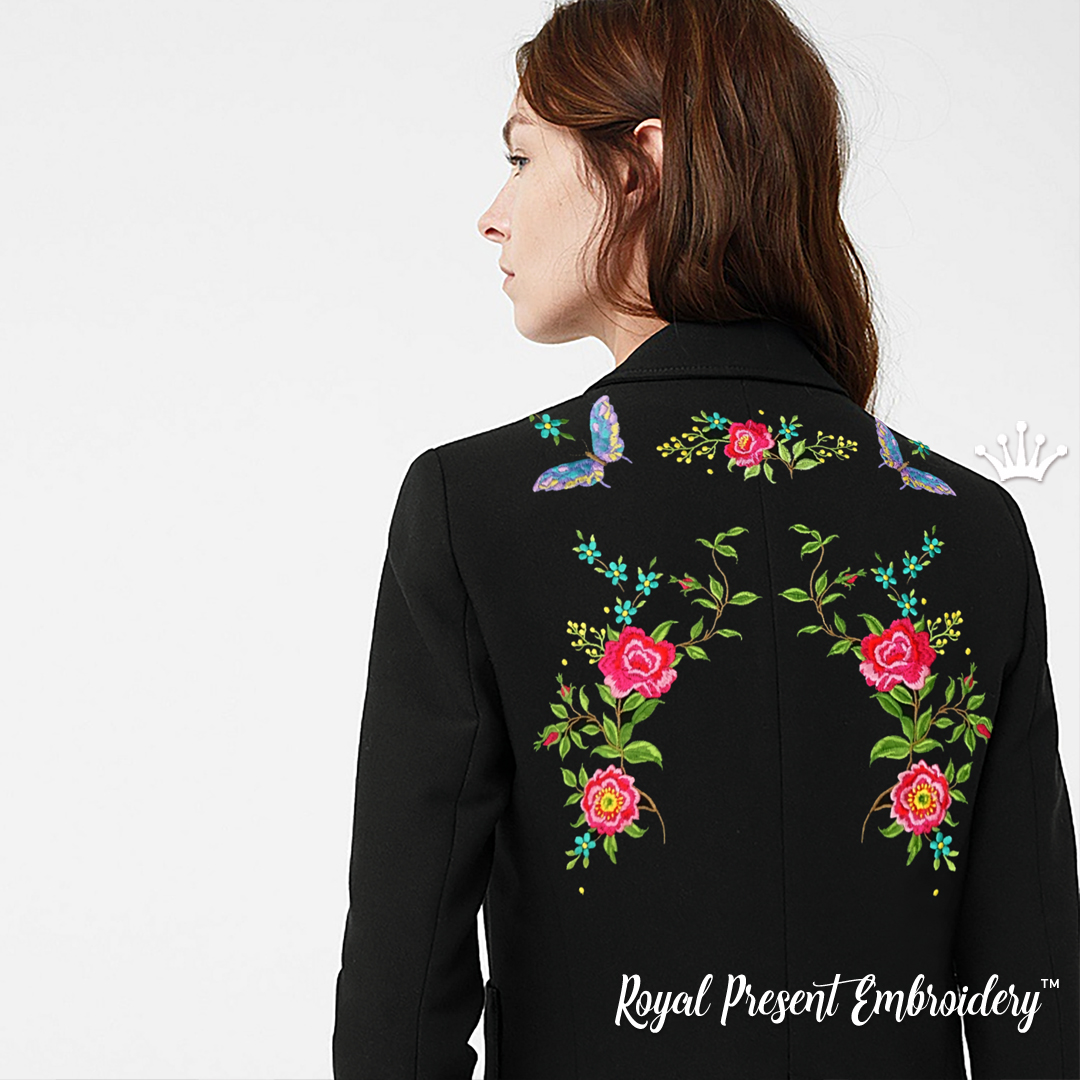Embroidery is an incredibly flexible and imaginative craft that enables enthusiasts to add lovely designs to a wide variety of projects. Whether you're embroidering clothing, home decor items, or gifts, selecting the appropriate embroidery size is critical for achieving breathtaking results. This post will delve into the factors that affect the ideal embroidery size for various projects, assisting you in making informed choices and improving your embroidery experience.
Understanding Machine Embroidery Size
Machine Embroidery size refers to the dimensions of the design that will be stitched onto the fabric or material. It is typically measured in either inches or millimetres and plays a significant role in determining the visual impact of the finished project. Selecting the appropriate size confirms the design fits ideally and harmoniously on the chosen item.
Factors Influencing Optimal Embroidery Size
1. Project Type and Purpose: The first consideration when choosing the embroidery size is the type of project and its intended purpose. For example, a small logo on a shirt pocket will differ from a large design on the back of a jacket. Determining the project type helps select the correct size that complements the item's dimensions and effectively serves its purpose.
Portrait Jack Russell Terrier Machine Embroidery Design - 3 sizes
2. Embroidery Area: Each machine has a maximum embroidery area, which varies depending on the model. It is essential to know the embroidery area to ensure that the chosen design size fits within the machine's limitations. Exceeding the machine's embroidering area may cause the embroidery machine to be unable to read the design.
Why the machine does not see the purchased design, you can read on our website in this article. Why wont my embroidery machine read a design when I transfer it into it
Set of Machine Embroidery Designs With Roses and Butterflies
3. Design Complexity: Intricate and highly detailed designs may lose their visual appeal if embroidered too small. Opting for a larger size is recommended to maintain the design's intricacies and prevent it from becoming indistinguishable.
For this reason, we do not encourage resizing embroidery in the direction of decreasing since all our designs are made in the smallest possible size to convey their beauty and the artist's intent. Our Design Resizing Service - Your Key to Perfect Embroidery. Check out our resizing service
4. Fabric or Material: Different fabrics and materials respond differently to embroidery. Thicker fabrics, like denim or canvas, can accommodate larger designs, while delicate fabrics, like silk or lace, may require more minor, less-dense designs to avoid damage.
There are articles available for you to peruse regarding selecting fabrics for machine embroidery:
Choosing fabric for machine embroidery. Part 1
Choosing fabric for machine embroidery. Part 2
Choosing fabric for machine embroidery. Part 3
Choosing fabric for machine embroidery. Part 4
5. Placement on the Item: Consider where the embroidery will be placed. For example, the front of a shirt or the centre of a cushion allows for larger designs, while collars or cuffs require smaller, more compact designs.
6. Personal Preferences: Embroidery is an art form, and personal preferences are crucial in choosing the size. Some prefer bold and eye-catching designs, while others opt for subtle and elegant motifs.
Optimal Sizes for Specific Projects
1. T-shirts and Polo Shirts: A typical embroidery size for the front chest area ranges from 3 to 4 inches wide. On the back of the shirt, larger designs between 8 to 12 inches wide can create a striking effect.
2. Caps and Hats: Embroidery on caps is usually around 2 to 3 inches wide, ensuring it fits comfortably on the front panel.
3. Towels: When embroidering on towels, a size of 4 to 6 inches wide works well, providing ample space for showcasing the design.
3D Leaves with fruits Set of Machine Embroidery Designs
4. Bags and Totes: The embroidery size for bags can vary depending on the bag's scope and purpose. Generally, designs between 5 to 8 inches wide are suitable for most totes and purses.
5. Baby Clothing: Smaller designs ranging from 2 to 4 inches wide are ideal for embellishing baby clothing without overwhelming the tiny garments.
6. Home Decor Items: For items like cushions, pillowcases, or tablecloths, the optimal embroidery size is usually between 5 to 10 inches wide, depending on the item's dimensions.
Tips for Perfect Machine Embroidery
1. Test Stitch: Before embroidering the final design, it's wise to do a test stitch on a similar fabric to ensure the size, density, and colours work well together.
2. Consider Hoop Size: Choose the appropriate hoop size for the design to avoid unnecessary rehooping and ensure smooth embroidery.
3. Digitize for Size: If you have a specific size in mind, consider getting the design professionally digitized to achieve the best results.
Conclusion
The optimal embroidery size is vital to achieving visually appealing and professionally executed projects. By considering factors like project type, design complexity, fabric, and personal preferences, you can make informed decisions to enhance your embroidery experience. Remember to test stitch and use suitable hoop sizes to ensure smooth and flawless embroidery results. With careful consideration and attention to detail, you can create stunning embroidered masterpieces that leave a lasting

Author: Ludmila Konovalova
My name is Lyudmila Konovalova, and I lead Royal Present Embroidery. Embroidery for me is more than a profession; it is a legacy of my Ukrainian and Bulgarian heritage, where every woman in my family was a virtuoso in cross-stitch and smooth stitching. This art, passed down through generations, is part of my soul and a symbol of national pride.
Date: 27.07.2023






 Get Sign-In Link
Get Sign-In Link Login with Google
Login with Google Login with Facebook
Login with Facebook Login with Amazon
Login with Amazon Login with Paypal
Login with Paypal